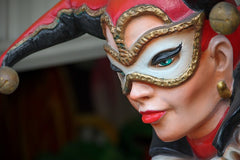My sister lives in the French quarter so I have a lot of first-hand experience with Mardi Gras

Dictionary result for Mardi Gras
-
a carnival held in some countries on Shrove Tuesday, most famously in New Orleans.“the Mardi Gras parade”
The origins of Mardi Gras can be traced to medieval Europe, passing through Rome and Venice in the 17th and 18th centuries to the French House of the Bourbons. From here, the traditional revelry of “Boeuf Gras,” or fatted calf, followed France to her colonies.

On March 2, 1699, French-Canadian explorer Jean Baptiste Le Moyne Sieur de Bienville arrived at a plot of ground 60 miles directly south of New Orleans and named it “Pointe du Mardi Gras” when his men realized it was the eve of the festive holiday. Bienville also established “Fort Louis de la Louisiane” (which is now Mobile) in 1702. In 1703, the tiny settlement of Fort Louis de la Mobile celebrated America’s very first Mardi Gras.
In 1704, Mobile established a secret society (Masque de la Mobile), similar to those that form our current Mardi Gras krewes. It lasted until 1709. In 1710, the “Boeuf Gras Society” was formed and paraded from 1711 through 1861. The procession was held with a huge bull’s head pushed along on wheels by 16 men. Later, Rex would parade with an actual bull, draped in white and signaling the coming Lenten meat fast. This occurred on Fat Tuesday.
New Orleans was established in 1718 by Bienville. By the 1730s, Mardi Gras was celebrated openly in New Orleans, but not with the parades we know today. In the early 1740s, Louisiana’s governor, the Marquis de Vaudreuil, established elegant society balls, which became the model for the New Orleans Mardi Gras balls of today.
The earliest reference to Mardi Gras “Carnival” appears in a 1781 report to the Spanish colonial governing body. That year, the Perseverance Benevolent & Mutual Aid Association was the first of hundreds of clubs and carnival organizations formed in New Orleans.

By the late 1830s, New Orleans held street processions of maskers with carriages and horseback riders to celebrate Mardi Gras. Dazzling gaslight torches, or “flambeaux,” lit the way for the krewe’s members and lent each event an exciting air of romance and festivity. In 1856, six young Mobile natives formed the Mistick Krewe of Comus, invoking John Milton’s hero Comus to represent their organization. Comus brought magic and mystery to New Orleans with dazzling floats (known as tableaux cars) and masked balls. Krewe members remained anonymous.

Mardi Gras is about music, parades, picnics, floats, and excitement. It’s one big holiday in New Orleans!
Revelers know to wear costumes or at least dress in purple, green, and gold, and adorn themselves with long beads caught from the floats of previous parades. You’ll see a lot of crazy costumes, kids with their families are everywhere, and both locals and visitors having a great time. Parade goers will sit on the ground, throw balls, play music, eat great food and watch the crowds walk by between parades. On Mardi Gras day, the majority of non-essential businesses are shut down because of the celebration.
Experienced revelers know to bring a large bag with them so they can haul away all the beads and trinkets they will catch from the parades!

Click on the buttons below to find out the answers to some of the most frequently asked questions.
Information From https://www.mardigrasneworleans.com/parades/
from KeywebcoShop – News Podcasts Blogs https://ift.tt/2EFmfXq
via IFTTT
The post Mardi Gras Is A Lot Of Fun But What Is It? appeared first on Whaz Up Today.
from WordPress https://ift.tt/2GRTFob





No comments:
Post a Comment